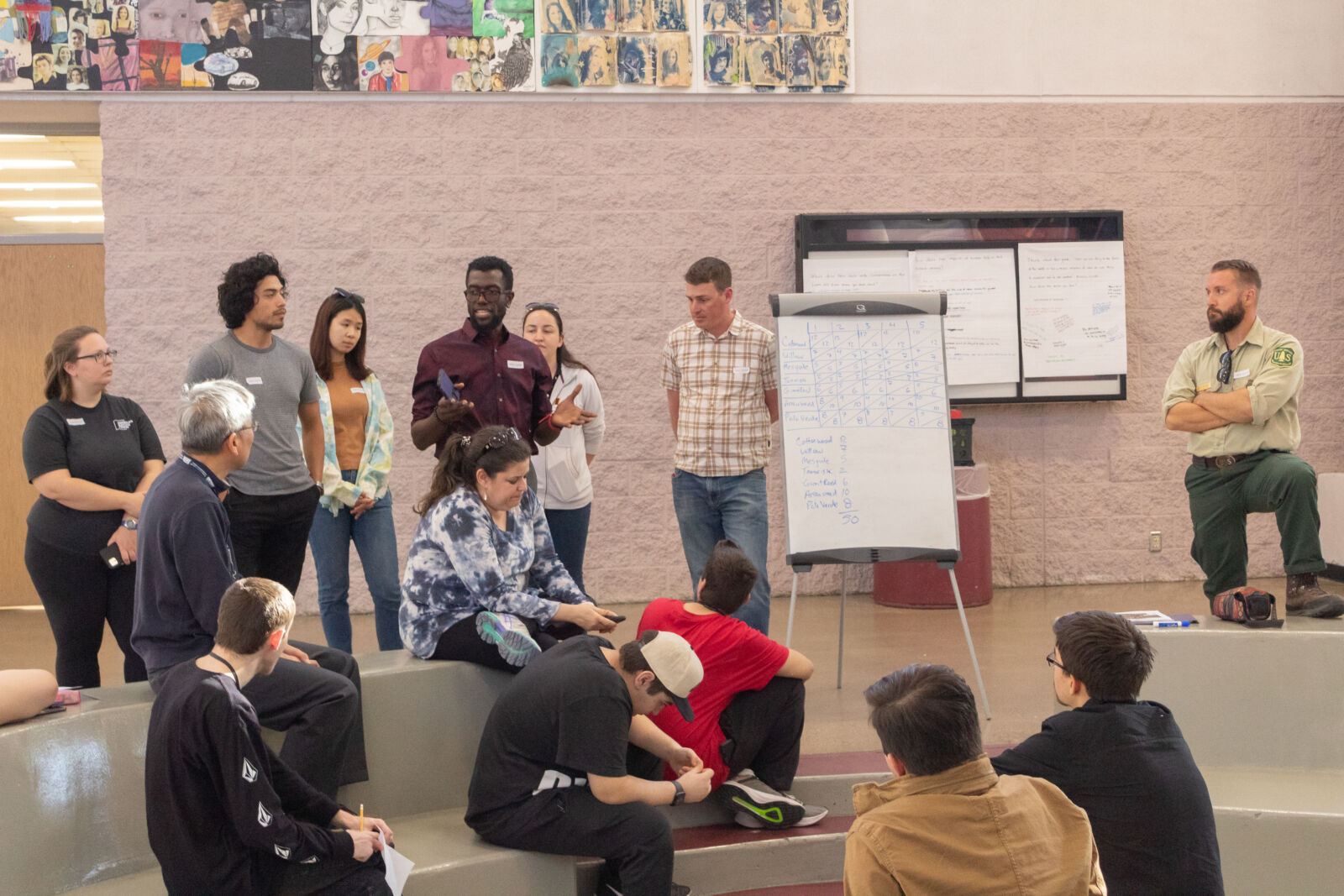
The Green Drone AZ project represents a unique partnership among the National Forest Foundation, Northern Arizona University, Arizona State University, USDA Forest Service, Audubon Southwest, and the Boeing Corporation. The project’s main objective is to strengthen and catalyze development of a broader “pipeline” of students interested in pursuing Science, Technology, Engineering and Mathematics (STEM) educational and career paths, by using cutting edge technology to address real community environmental challenges. Students enrolled in the program become active contributors to an ongoing restoration effort on the Tonto National Forest, known as the Lower Salt River Restoration Project.
Launched in early 2020, the Green Drone AZ project aims to meaningfully engage diverse high school students in the Phoenix metropolitan area by training them in the use of basic level Unmanned Aerial Vehicle (UAV), or drone and Geographic Information Systems (GIS) technology. Students participate in curriculum and explore real world data collected to help inform management decisions on our public lands. By connecting these participants with college students and professionals in fields of STEM and conservation, GDAZ aims to inspire a new generation of thinkers to use their knowledge and skills to solve tomorrow’s environmental challenges.
As with the rest of the world, the COVID19 pandemic brought this project to a screeching halt in March of 2020. Originally designed as a series of educational modules delivered in person to students at high schools across the valley, the closure of schools presented a monumental challenge to the Green Drone AZ team. How would the Green Drone AZ project reach students if there were no schools open to visit? With a twist of irony this program, designed to help students better understand how technology can help to solve today’s environmental challenges, turned to technology and the internet to complete its objectives.
Green Drone AZ quickly mobilized to develop a website to store its state-standards-based curriculum and program content and provide an opportunity for students to remain engaged. As the summer progressed and it became clear there was no easy solution for schools to open in the Fall, the team expanded its efforts to change the trajectory of the project all together. Green Drone AZ went online. The team worked with organizations such as the SciTech Institute to fine tune the delivery of content online and developed its own Google Classroom. Not only would this method allow Green Drone AZ to continue its educational outreach, it would provide a unique distance learning opportunity to students and teachers looking for a new way to implement their curriculum in an online or hybrid environment.
By utilizing the Google Classroom environment and unlimited resources of the internet, Green Drone AZ was able to expand its curriculum and include a vast amount of educational resources from organizations such as National Geographic and Esri, the world leader in GIS technology. On September 14th Green Drone AZ launched its first year long online educational program to approximately 115 students from high schools across the valley. Through adaptation and a bit of creativity, the Green Drone AZ project continues its effort to bring a new generation to the intersection of conservation and technology.
Green Drone AZ would not be possible without the significant funding commitments made by important partners. Thanks to the Boeing Company and Arconic Foundation for growing STEM and conservation opportunities across the Phoenix-metro area! Learn more at www.greendroneaz.com

